00:38
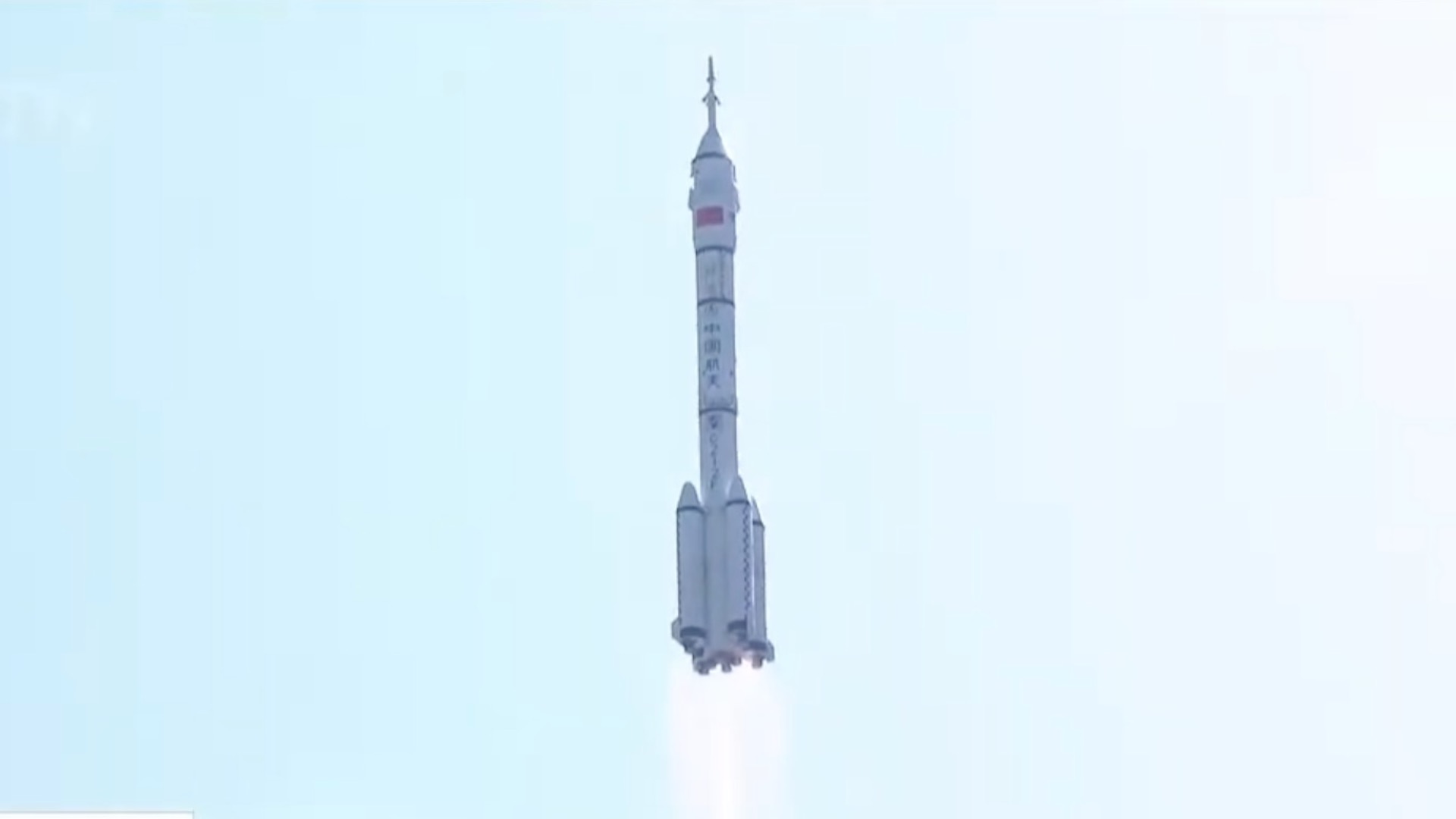
China launched the Shenzhou-17 manned spaceship from the Jiuquan Satellite Launch Center in northwest China on Thursday.
A Long March-2F carrier rocket, carrying the Shenzhou-17 spacecraft with three Chinese astronauts, known as taikonauts, on board, blasted off at 11:14 a.m. Beijing Time.
Approximately 10 minutes after the launch, the spaceship separated from the rocket and entered its pre-determined orbit with the crew in good condition, marking the launch as a complete success, announced the China Manned Space Agency (CMSA).
This is the 30th flight mission of China's manned space program, all of which are successful, and the 12th manned mission of the program.
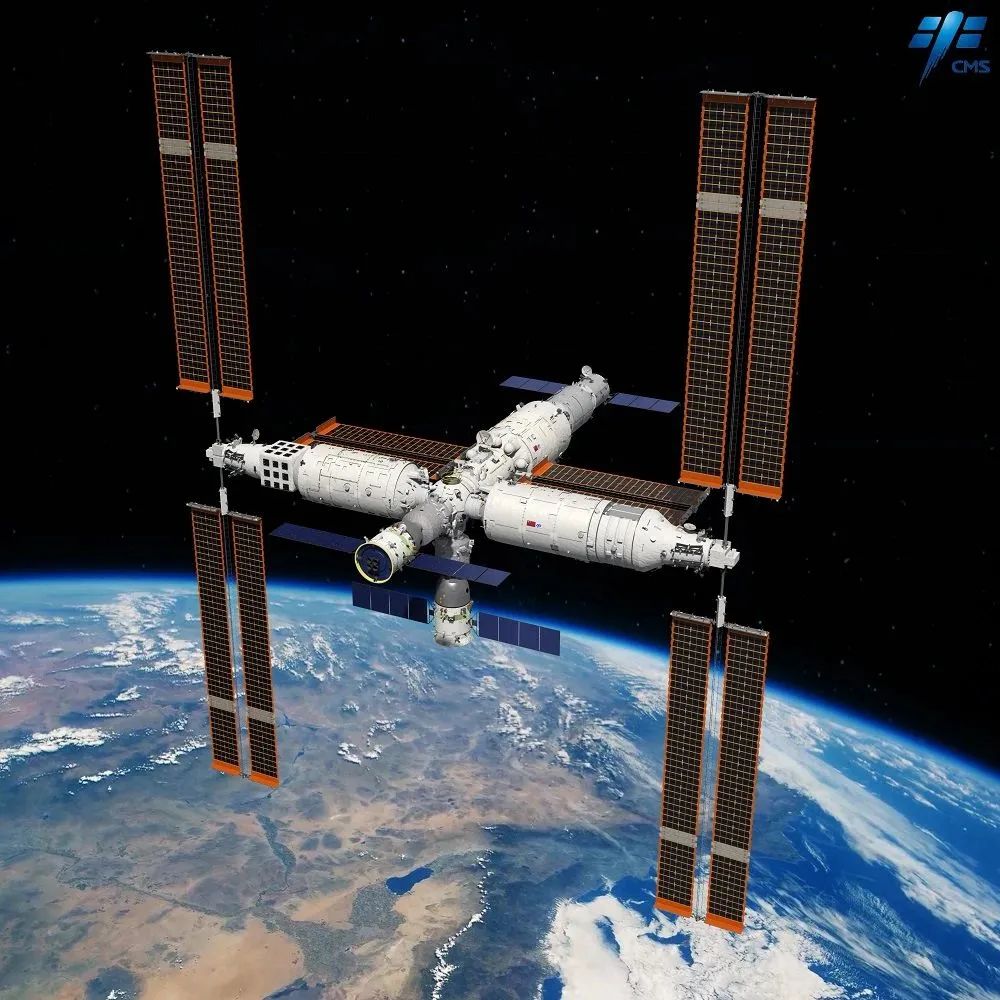
An illustration of China's space station assembly consisting of three modules and three spaceships. /CMSA
An illustration of China's space station assembly consisting of three modules and three spaceships. /CMSA
The spaceship will conduct a fast automated rendezvous with China's space station assembly, forming a combination of three modules and three spaceships.
The space station assembly has entered the docking orbit and is in excellent working condition, ready for docking with the Shenzhou-17 spaceship.
Click here for CGTN livestream for the event.
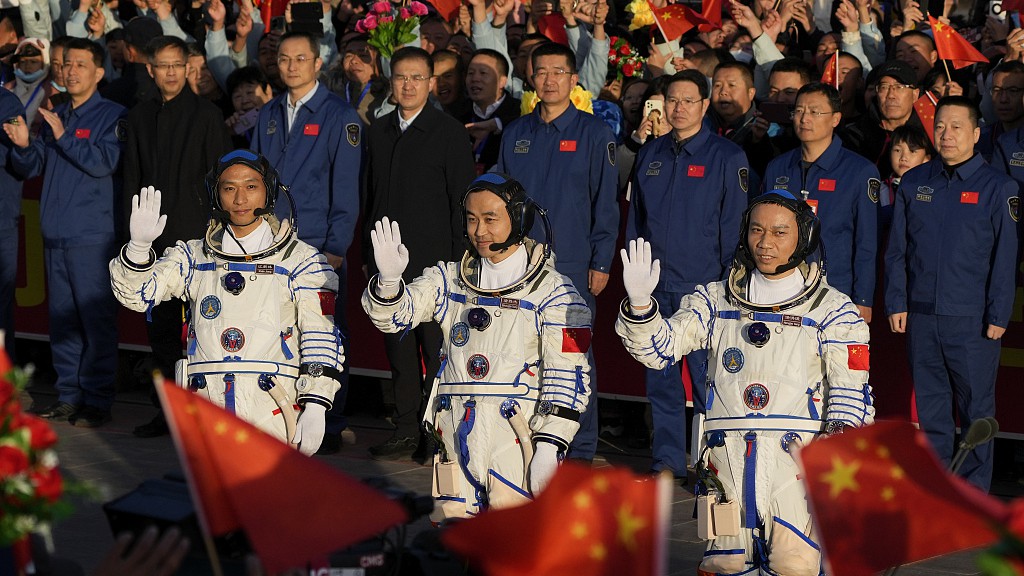
A send-off ceremony for the Shenzhou-17 crew held at the Jiuquan Satellite Launch Center, October 26, 2023. /CFP
A send-off ceremony for the Shenzhou-17 crew held at the Jiuquan Satellite Launch Center, October 26, 2023. /CFP
A send-off ceremony for the Shenzhou-17 crew was held earlier on Thursday morning at the launch center.
Youngest taikonaut crew
The Shenzhou-17 crew, with Tang Hongbo as the commander and Tang Shengjie and Jiang Xinlin as the operators, is scheduled to stay in orbit for about six months.
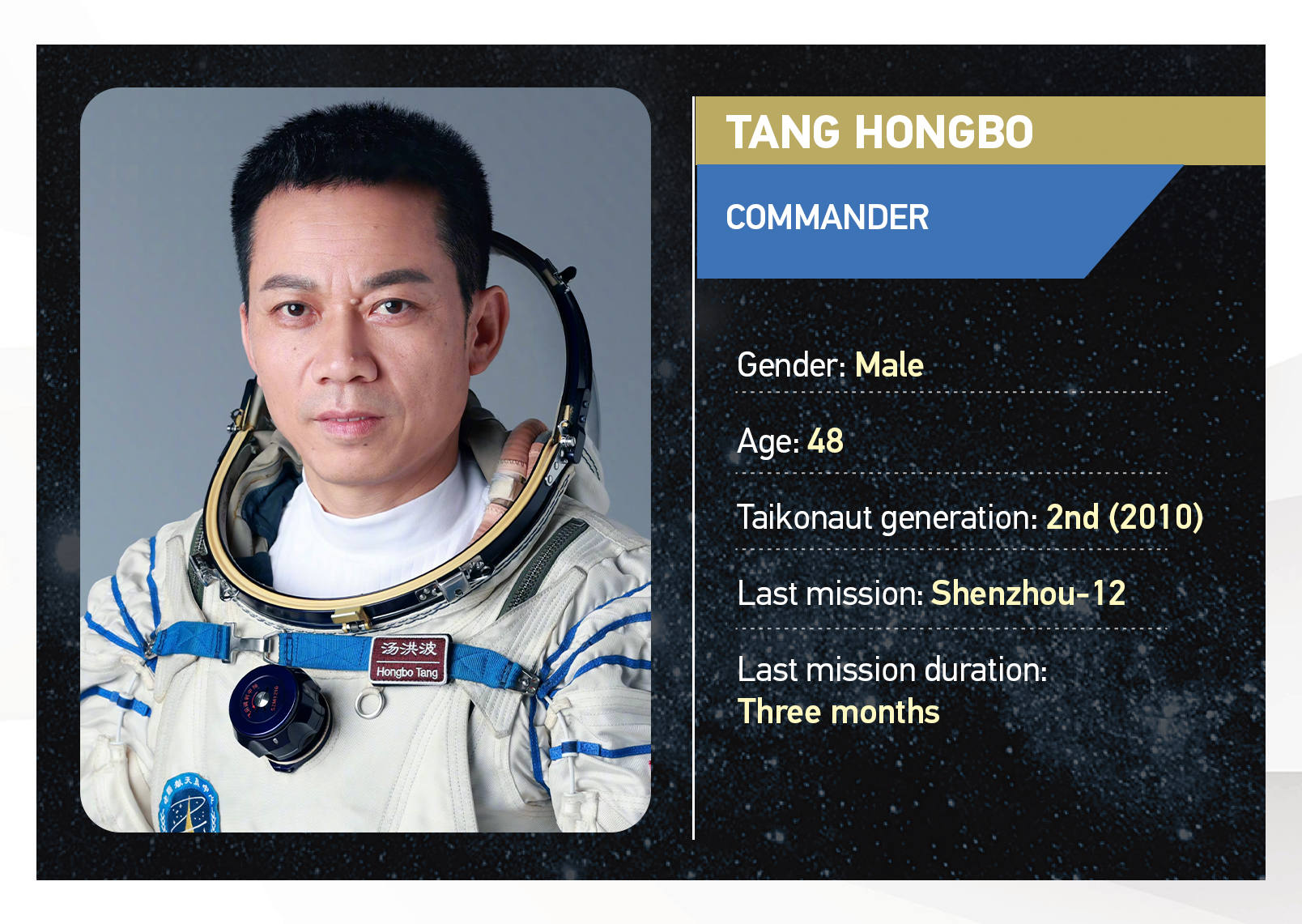
CGTN graphics by Yin Yating
CGTN graphics by Yin Yating
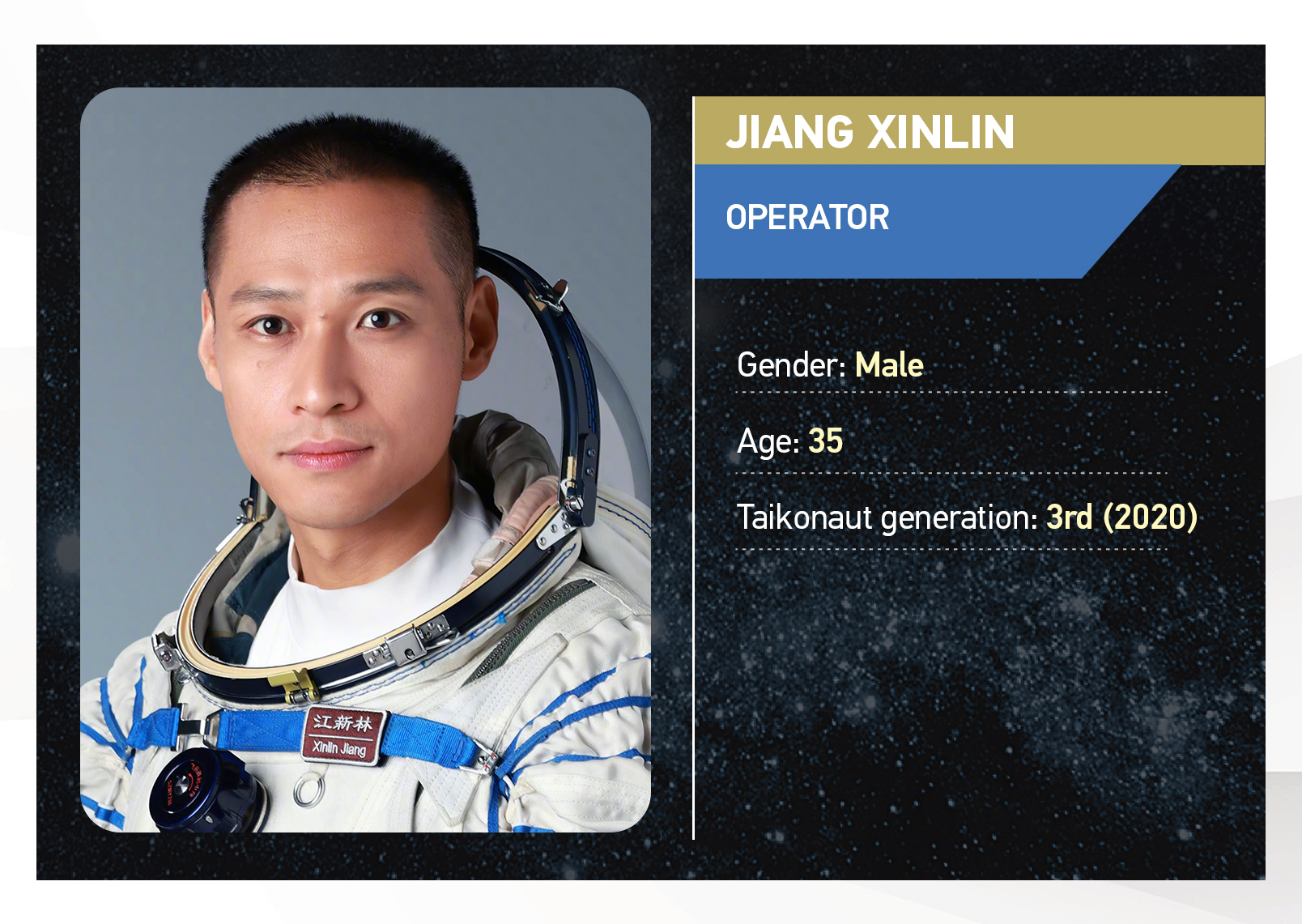
CGTN graphics by Yin Yating
CGTN graphics by Yin Yating
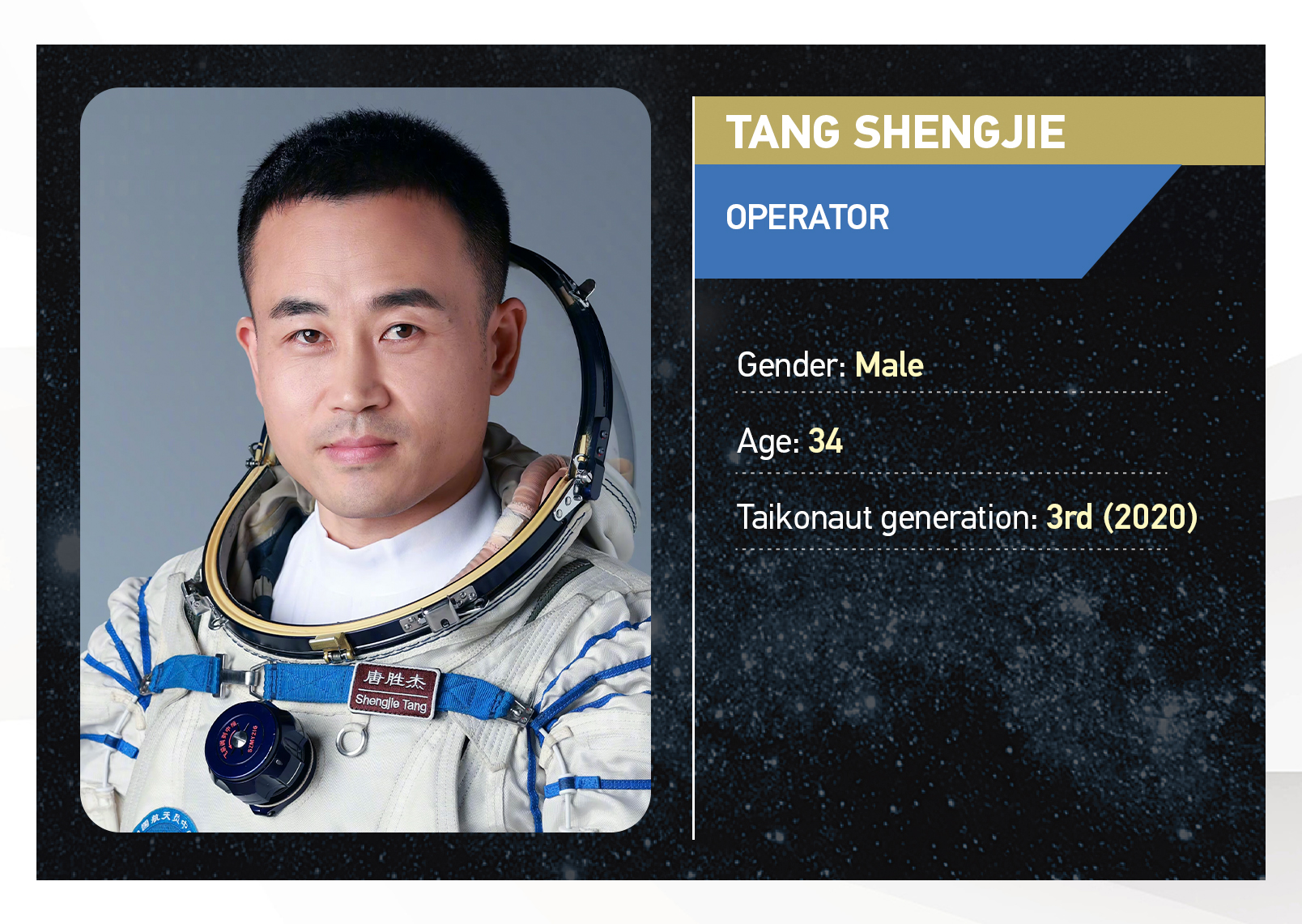
CGTN graphics by Yin Yating
CGTN graphics by Yin Yating
The trio is known as the country's youngest lineup by average age – with Commander Tang at 48, Operator Tang at 34, and Jiang at 35 – since the space station's construction began.
Tang, the crew's captain, will be the first taikonaut to return to China's space station, having participated in the Shenzhou-12 mission in 2021, which was the first crewed mission during the construction of China's space station.
He also set a new record for the shortest interval between two spaceflight missions by taikonauts.
The Shenzhou-17 crew will undertake a series of tasks, including in-orbit tests of space science and application payloads, extravehicular activities, installation of extravehicular payloads, and space station maintenance.
Meanwhile, they will continue to evaluate the functional performance of the space station assembly, acquire valuable data and experience in space station operation, and assess the coordination and compatibility of ground support centers in carrying out space station operation and management tasks to further enhance the operation efficiency and fault handling capacity of the space station.
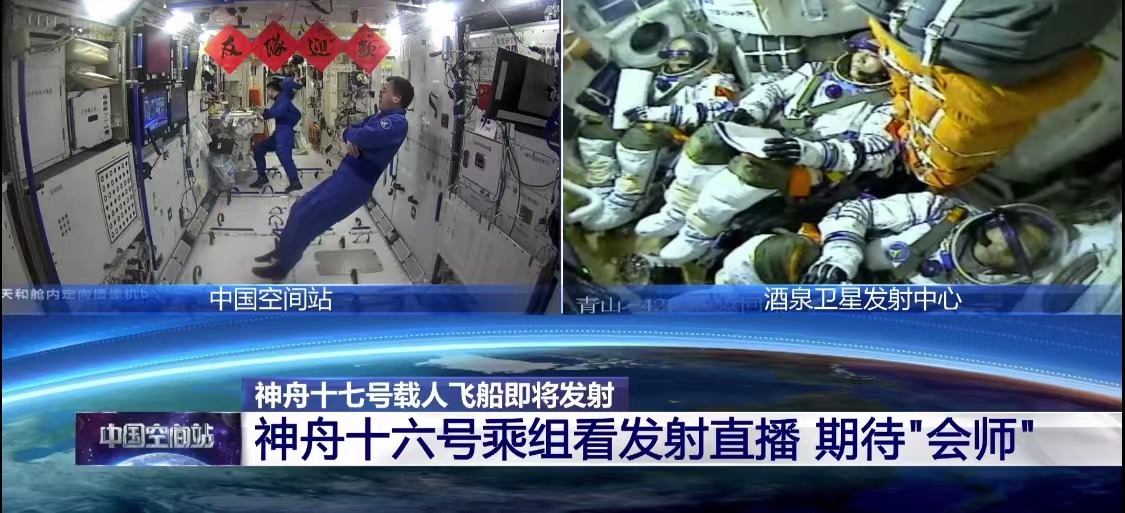
The in-orbit Shenzhou-16 crew watching the live coverage of the Shenzhou-17 launch. /CMG
The in-orbit Shenzhou-16 crew watching the live coverage of the Shenzhou-17 launch. /CMG
The trio will be welcomed by the Shenzhou-16 crew and conducted the country's third in-orbit rotation.
The Shenzhou-16 crew is set to return to the Dongfeng landing site in the Gobi Desert, north China's Inner Mongolia Autonomous Region, on October 31, according to the CMSA.
First extravehicular experimental maintenance
Among their tasks, the Shenzhou-17 crew will undertake a "very challenging task" for the first time: extravehicular experimental maintenance, according to the CMSA.
"There will be some small scratches outside the space station due to the impact of space debris. Though such scratches were considered when designed, we still need to perform regular maintenance to ensure the long-term use and service life of the space station, just like the cars," Liang Guozhu, professor at the School of Astronautics of Beihang University, told China Media Group.
Liang noted that this task carries potential risks, requiring the taikonauts to be prepared for emergency responses.
Invitation to foreign astronauts
China has extended an invitation to the world, welcoming countries and regions committed to the peaceful use of outer space to collaborate in China's space station missions, as stated by the CMSA.
This indicates that the normal operation of China's space station has reached a very high level, according to Liang.
"The main goal of China's space program is to make peaceful use of space, and the exploration of space is the dream of all mankind. Therefore, we hope that astronauts from other countries can participate in our work to jointly develop space resources, strengthen international cooperation and promote the development of human space community," said Liang.